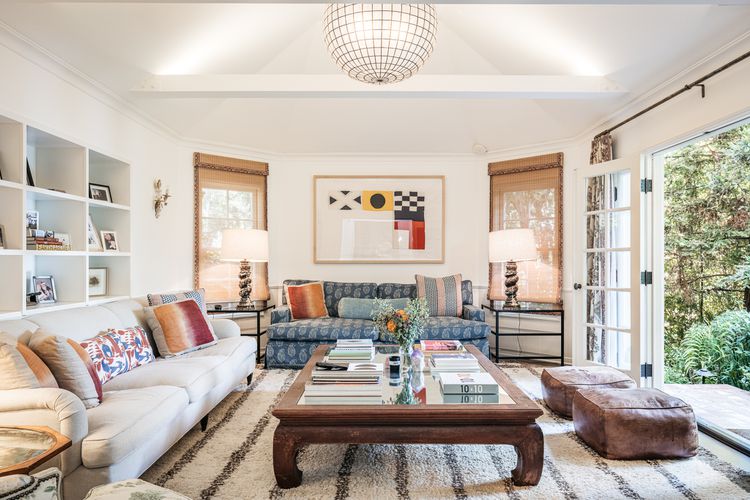
The most comfortable living spaces are those that transcend a particular time period, blending various aspects of historical home design. The urge to combine vintage and contemporary styles may be inspired by your home’s architecture, a cherished family heirloom, or a unique find from a thrift shop.
Here are some suggestions for blending contemporary and vintage furnishings to achieve a timeless, layered interior design.
Contents
What distinguishes Vintage from Antique?
An antique is typically defined as an item that is over a century old. Items that are aged between 20 and 100 years are generally classified as vintage. The term modern can denote midcentury modern design from the 20th century or can be used interchangeably with current and contemporary, typically describing anything that is less than 20 years old, including brand new items.
Achieve the Perfect Equilibrium
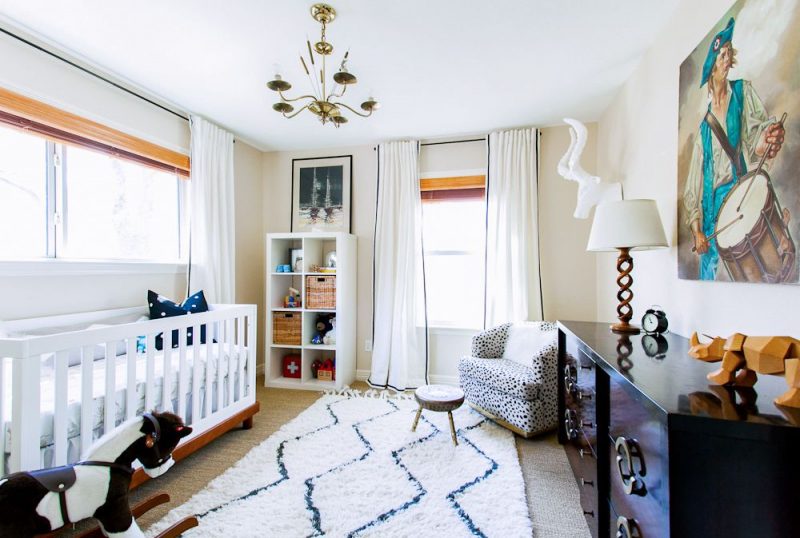
According to interior designer Erin Williamson of Erin Williamson Design, blending vintage items with contemporary furnishings allows for a wide range of possibilities.
A home ought to be a reflection of items that resonate with you and hold significance, rather than just a display of matching furniture. However, it’s beneficial to distribute the aged elements throughout the area, creating a contrast between the vintage and the contemporary that feels invigorating and unexpected, rather than worn-out.
Williamson highlights the significance of scale in the arrangement of antique furniture. She notes that numerous dark, substantial wooden items tend to feel more at ease when positioned against a wall or in close proximity to it.
Delicate and slender furnishings ought to be positioned alongside bulkier pieces to create a harmonious and inviting atmosphere in the room. Achieving a proportional balance throughout the space allows for greater freedom to experiment with various patterns, hues, textures, and designs.
Take into account both structure and purpose.
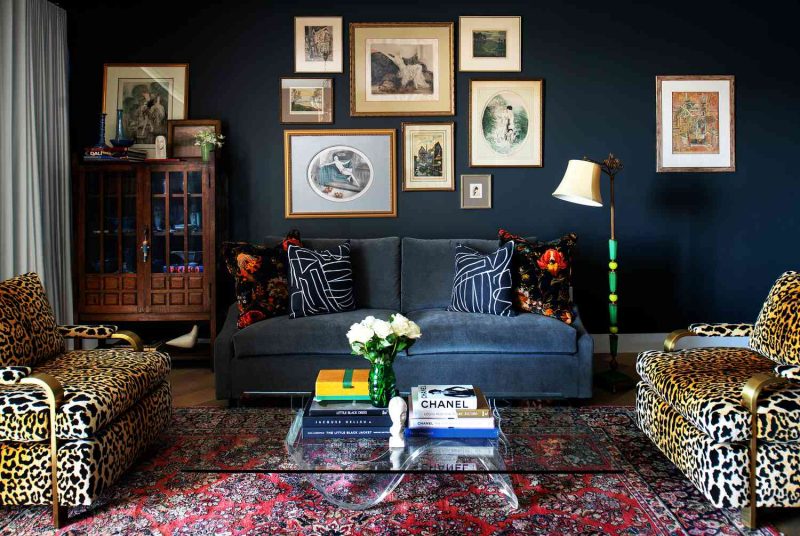
When deciding whether to retain or incorporate a vintage item into a contemporary design, it’s important to evaluate both its aesthetic and practical aspects. Antique pieces frequently showcase exceptional craftsmanship that is increasingly rare, featuring detailed woodwork, marquetry, or ornate embellishments that are not typically present in standard modern furniture.
Interior designer Lisa Gilmore from Lisa Gilmore Design believes that the key to effectively blending modern elements with antiques lies in the balance of shapes. She emphasizes the importance of incorporating both sleek lines and curves. Additionally, Gilmore suggests combining various metal finishes to add depth to the design and prevent it from appearing outdated.
Transform and Restore
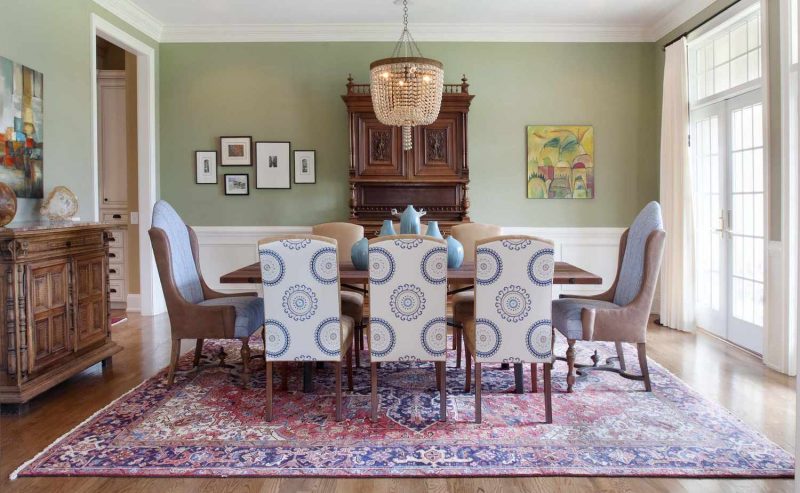
Although the deep character of a fine antique or vintage item is unmatched, not every antique holds significant value or requires preservation in its original form. If you come across your grandparents’ old dining table, discover an antique bed frame at a flea market, or find a thrift store armoire with a solid structure but an outdated finish, take a moment to envision its potential. Consider how it might appear if it were stripped down, refinished, or revitalized with a fresh coat of paint.
New upholstery can infuse a contemporary vibe into antique pieces while still preserving their classic allure, notes Williamson. If you’re drawn to a pattern, think about the silhouette of the furniture and choose whether to complement or contrast the design. For instance, stripes on a curved sofa can accentuate its contours, while floral patterns on a straight-backed chair can introduce a touch of gentleness.
Williamson suggests that updating the batting and springs can enhance the comfort of older seating, bringing it in line with contemporary standards.
Harmonize Through Color
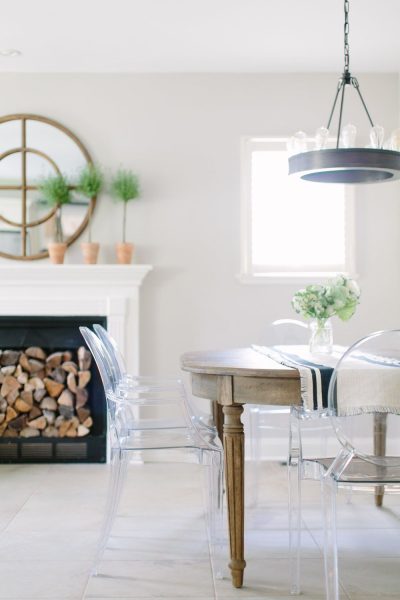
A key challenge in blending vintage and contemporary items lies in achieving a harmonious integration of different eras and styles. Although combining various wood finishes and metals can be a creative endeavor, a straightforward approach to harmonizing diverse elements is to bring them together through a consistent color scheme.
For enthusiasts of shabby chic decor, achieving a harmonious look can be accomplished by giving a fresh coat of creamy white paint to secondhand treasures such as nightstands, dining chairs, tables, and dressers. Incorporating white, plush armchairs and sofas will further enhance the aesthetic, allowing for a seamless blend of different styles and eras by emphasizing the shapes of the furniture.
Select a Bold Statement Item
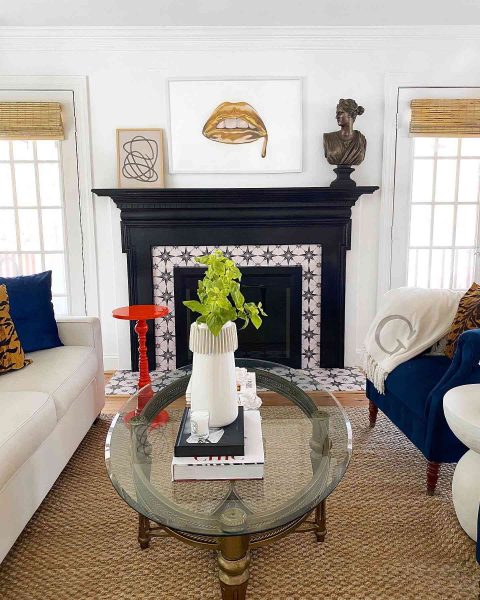
To achieve a striking effect in a contemporary space using a vintage item, consider opting for a prominent statement piece. This could be a sizable antique armoire, a headboard in the Baroque or Art Deco style, or a rustic farm or coffee table.
This approach is especially effective in a neutral environment that requires a central feature or a dramatic touch, which can be created through the use of contrast and juxtaposition. The same principle can be applied to substantial decorative elements, such as an ornate mirror or a classic rug, to ground a modern living room.
Emphasize Statement Accessories
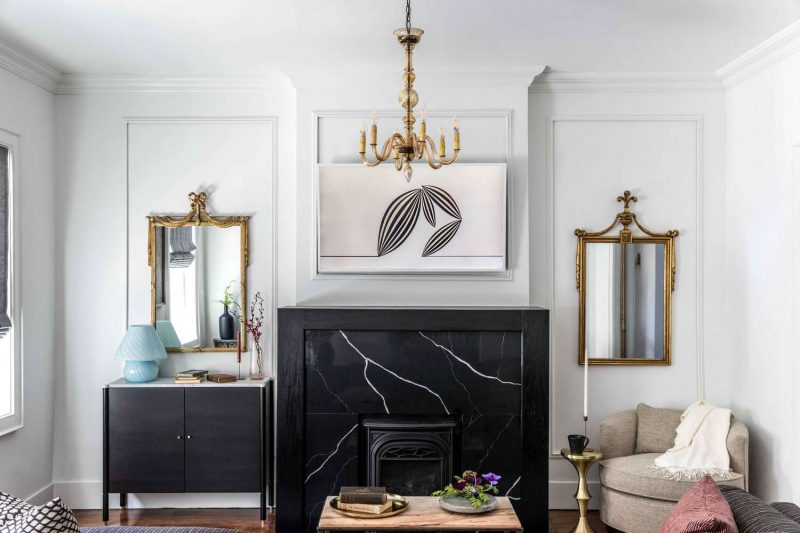
Not everyone is inclined or able to invest in grand dramatic designs featuring eye-catching antique centerpieces. If you have a passion for antiques but find the idea of purchasing antique furniture daunting, consider beginning with smaller items like side tables and wooden stools, or decorative accents such as intricately designed gilded mirrors, lighting elements, and rugs.
A truly oversized antique or vintage rug instantly establishes the atmosphere, Gilmore explains, and it opens up a world of possibilities for playful layering and additional decor.
Is it acceptable to combine contemporary and classic furniture styles?
Absolutely. Combine contemporary and classic elements to create a layered aesthetic in your home that appears to have been curated over time. Opt for neutral tones to simplify the process of blending different eras and styles. Alternatively, refresh traditional upholstered furniture by using vibrant or patterned modern fabrics for a surprising twist.
Is it possible to combine contemporary and rustic furniture styles?
Certainly! Achieve a balanced aesthetic by matching a traditional farmhouse table with contemporary chairs, or by blending a sleek sofa with a rustic coffee table in a modern rustic living space.
What actions should be avoided when dealing with antique furniture?
Avoid obscuring the authentic patina of vintage furniture by applying layers of paint that diminish its allure. When restoring damaged antiques, handle them with care, ensuring that you preserve the original features that contribute to their character.
Does refinishing antique furniture diminish its value?
Restoring the wood finish on an antique dresser typically won’t affect its worth, unless it’s an exceptionally rare item. Removing a dark stain from a common antique table or applying a fresh coat of paint to an old armoire can help these vintage pieces blend seamlessly into contemporary settings. However, it’s important to avoid covering the aged patina of unique antique painted furniture or gilded mirrors, as doing so can strip them of their historical significance, charm, and overall value.

